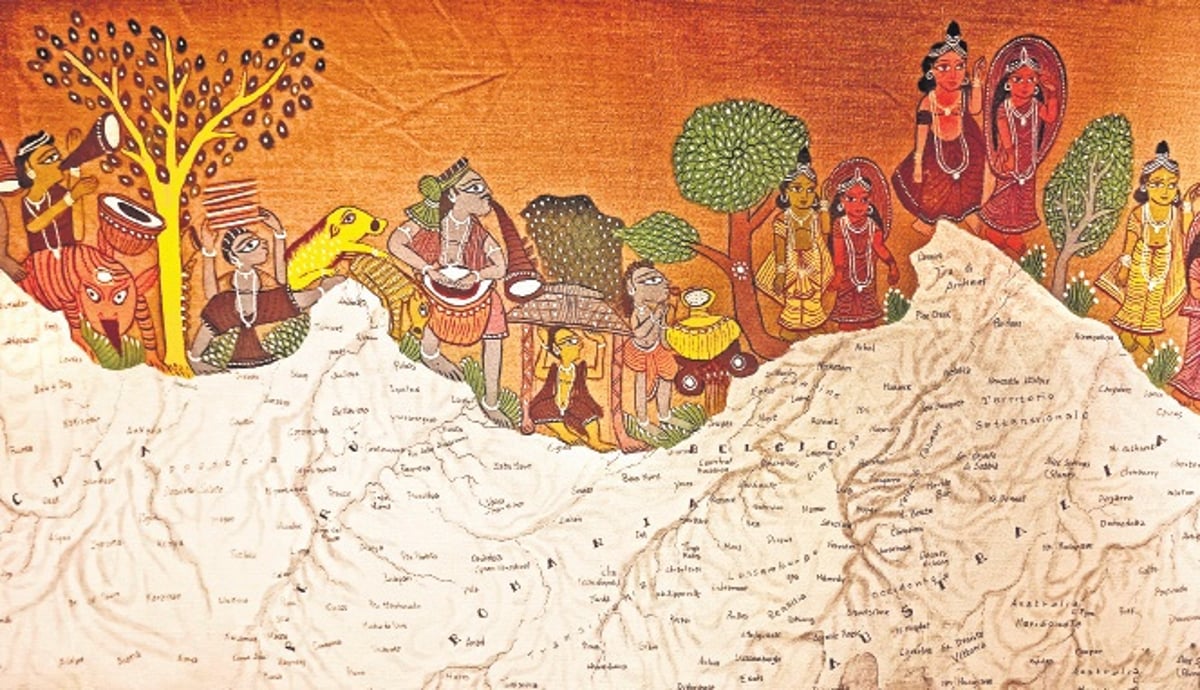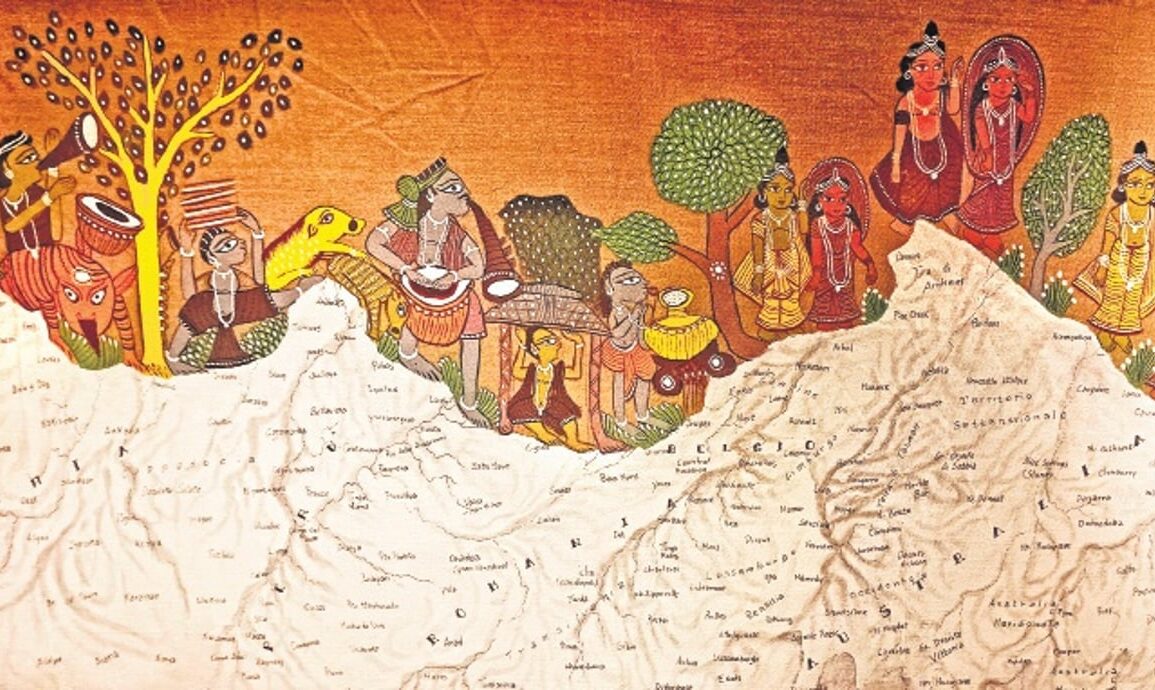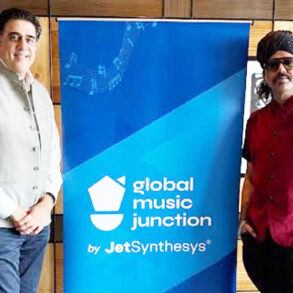
“A fundamental topic of the creativity that I manifest is sacred geographies. Once I was in Osho’s ashram in Pune and he spoke about these lines that were made on geographical maps, about the limits of each nation, the borders, and he said that it was not possible that the world was created with all these limitations. Mankind created divisions and these external divisions on the planet turned against ourselves as we, men and women, are also divided internally. We think of something, and yet we say or do something else. He said we can start from wherever we want, for example, by working on the unity within us to be able to see and live on a planet without borders,” says the artist.
Tarshito keeps travelling across the globe working with artists he meets in various countries, but with India, he says, his connection is special. His creativity straddles not only borders but also mediums. A work on fabric he did with Mangu Ben, a textile artist from Gujarat, titled ‘Guerreiro D’Amore’, presents the figure of a yellow moustachioed man, who seems charged with an energy that radiates out of his body and the splendid flower that he holds to his chest. Such imageries, depicting man and nature, dominate the works on display. Flora and fauna are intertwined with humans, pointing towards a primordial state of natural oneness. The inspiration for this comes from the artist’s collaborations with tribal and traditional artists from across the country.
“Tarshito has infused energy into indigenous art practices by collaborating with inheritors of a pre-modern past,” says Tunty Chauhan, the curator of the exhibition. “The binaries of folk and contemporary, art and craft dissolve in his works. He also shares equal space in his work with indigenous artists from India, in the true spirit of collective collaboration,” she adds.
This post was originally published on this site be sure to check out more of their content






